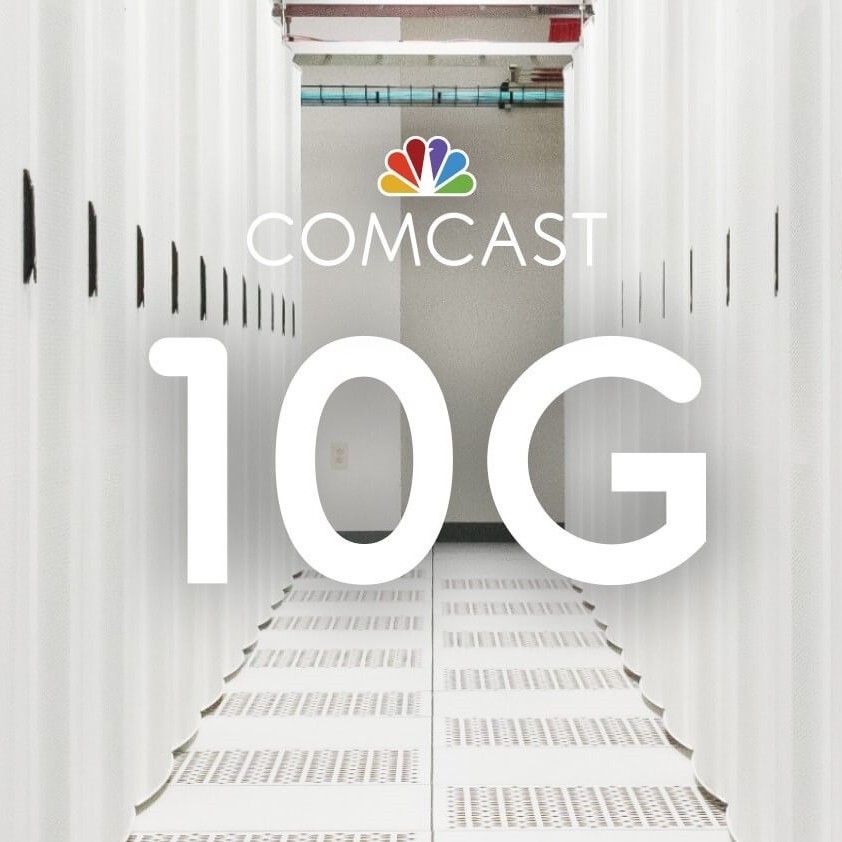Tapping into its distributed and virtualized access architecture, Comcast is plugging remote OLTs into optical nodes to support a targeted fiber-to-the-premises trial in Denver.

Showing off the diversity of its distributed and virtualized access architecture, Comcast has begun to test a new way of deploying fiber-to-the-premises (FTTP) technology on a targeted basis.
Using the same distributed access architecture (DAA) and virtual cable modem termination system (vCMTS) that's being used to support its coming DOCSIS 4.0 deployment on the hybrid fiber/coax (HFC) plant, Comcast is beginning to add targeted FTTP to the mix. It will do that through the deployment of a virtual broadband network gateway (vBNG) and a remote optical line terminal (rOLT) that is plugged into the node. The initial trial of that setup got underway toward the end of 2022 in Denver, the operator said.
Figure 1:  (Source: Comcast)
(Source: Comcast)
Capable of delivering symmetrical, multi-gigabit speeds, Comcast's trial with a live customer in Denver ties into the cable industry's broader "10G" initiative. Introduced at the 2019 CES in Las Vegas, that 10G approach aims to deliver symmetrical, multi-gigabit services, enhanced security and lower latencies via multiple access technologies, including HFC/DOCSIS, FTTP and wireless.
The test in Denver illustrates that Comcast can use a common platform to deploy broadband services over both HFC and fiber, the company said. Comcast, which uses a different architecture for its 6-Gig-capable "Gigabit Pro" FTTP deployment, didn't say when it expects to deploy this new capability commercially. However, the company notes that the Denver test is not a proof-of-concept trial, but a "real deployable scaled solution." Comcast intends to expand the trial into a national launch.
"This milestone represents the first time anywhere across the industry where the vision of the converged Distributed Access Architecture (DAA) has become a reality and is being delivered to live customers," Elad Nafshi, EVP and chief network officer at Comcast Cable, said in a statement.
For use in greenfields and brownfields
The FTTP use case emerges as Comcast explores ways to target fiber services to customers who require the capacity and for buildouts to areas adjacent to existing HFC plant, to apartment buildings, in rural environments, and to other types of greenfield scenarios.
Comcast added about 840,000 network passings in 2022, and is on pace to add another 1 million new passings in 2023.
The operator didn't dig into the finances of its FTTP deployment model, but the approach "empowers us to deploy the right network for the right location at the right economics as we continue to expand our network to more homes," Nafshi explained.
"For many customers," he added, "this means leveraging the connections already in place in their homes, which are typically coax. For others, like those in untapped rural areas or newly built multifamily buildings, it might mean fiber. We can make the best decision for our customers' needs when it comes to how we deliver connectivity in the most efficient, cost-effective and timely manner possible."
Comcast did not reveal all of its tech partners for the trial. However, Harmonic is its partner for Comcast's vCMTS platform and a key supplier of DAA nodes. Harmonic is also among vendors that have been woven into Comcast's upgraded headend in Denver.
Comcast's Denver trial also illustrates more momentum for remote OLTs. Other cable operators deploying vCMTS and DAA/remote PHY architectures are also pursuing this path. Charter Communications, for example, is also using remote OLTs for its rural fiber buildouts and as a "fiber on demand" option for select customers being served by Charter's legacy HFC networks.
Related posts:
— Jeff Baumgartner, Senior Editor, Light Reading
About the Author(s)
You May Also Like




.jpeg?width=300&auto=webp&quality=80&disable=upscale)






